Recently, my company, Ninjaneer Studios, was invited to exhibit at the Otronicon event. We decided to set up a small-scale 3D projection mapping show. My specific contribution was the cityscape at the end of the show.
http://www.youtube.com/watch?v=gNpawNyJ1ng
While Ninjaneer generally uses Maya for 3D work, I use LightWave occasionally, especially in projects where I’m working solo. This was my first big test of a cross-platform workflow, since the template for the stage and projector set-up was a Maya file, I wanted to model the city buildings in Lightwave so I could work with the greatest speed, and my scene would have to go back to Maya for rendering by my colleague Christopher Brown, who was in charge implementing the show. It was much easier than I expected, though it helped that thanks to time constraints and the nature of the final output, I elected not to give the buildings more than the simplest of surfaces.
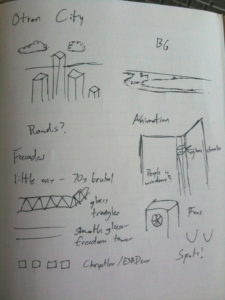
Design doodles
The first step was to do research. I had five-and-a-half rectangular silhouettes, and needed to make each building as distinct and interesting as possible. The first building from the left was inspired by a computer-animated video showing the construction of the replacement World Trade Center tower in New York. I took advantage of the transparent design to incorporate an elevator at each corner, adding some life to the building.
Building two was primarily based on the Flatiron Building, also in New York. It was the last or second-to-last I did, and I felt I was being a bit too modernist with the others, and that “Otron City” (as no one else called it) needed some older architecture. I also wanted to make a small reference to the apartment building which was the setting of my University class’s graduation project, the animated short “Squeaky Business.”
Building three was a lucky break during research, coming from a Google image search. I eventually learned it was a (new? Proposed? I never found a detailed description) building in Miami. I actually decided building four would just be a concrete cube with some fans in it before I found out how the practical boxes would be arranged, since it was the only thing I could think of for something so small. It ended up fitting perfectly on top of number three as if it were a machine room. The inclusion of the fans added some more animation to buildings.
Building five was loosely based on the Swiss Re building in London (which I had never actually noticed before the most recent season finale of “Doctor Who,” where I briefly thought it was a special effect because it was so aggressively modern).
Building six is my personal favorite, and is based on the HSBC Building in Hong Kong. I became aware of it during the research process, while I was looking through a coffee table book I got on clearance some years ago in case something like this happened, Masterpieces of Modern Architecture.
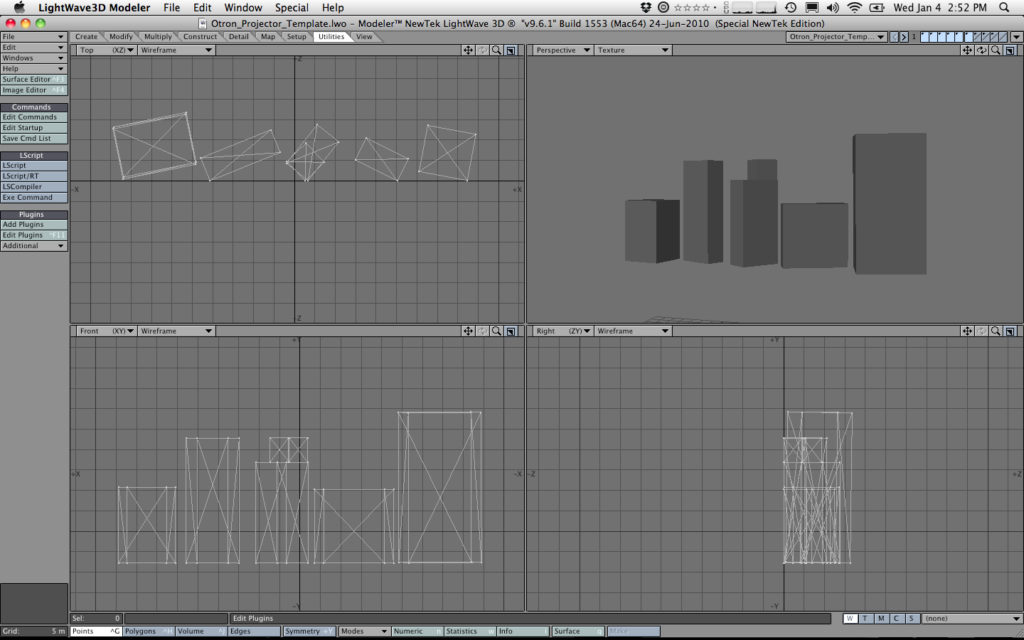
Our template 3D set
I exported the Maya template scene for the show’s setup as a Collada file, and brought it into LightWave Modeler. I modeled the six buildings and sent them back to Maya using LightWave’s FBX exporter, since I wanted to try all the interoperability. Due to time constraints and the way the fact that fine detail wouldn’t be very apparent in the final output, the Maya versions had just simple values set for the shading. I set up a basic scene with duplicate buildings filling out the background and a skydome rotating around the scene to give the illusion that the time of day was changing and really sell the simulated depth of the projection, as well as animating the fans on building four and the elevators on building one in a cycle so the whole thing could be looped.
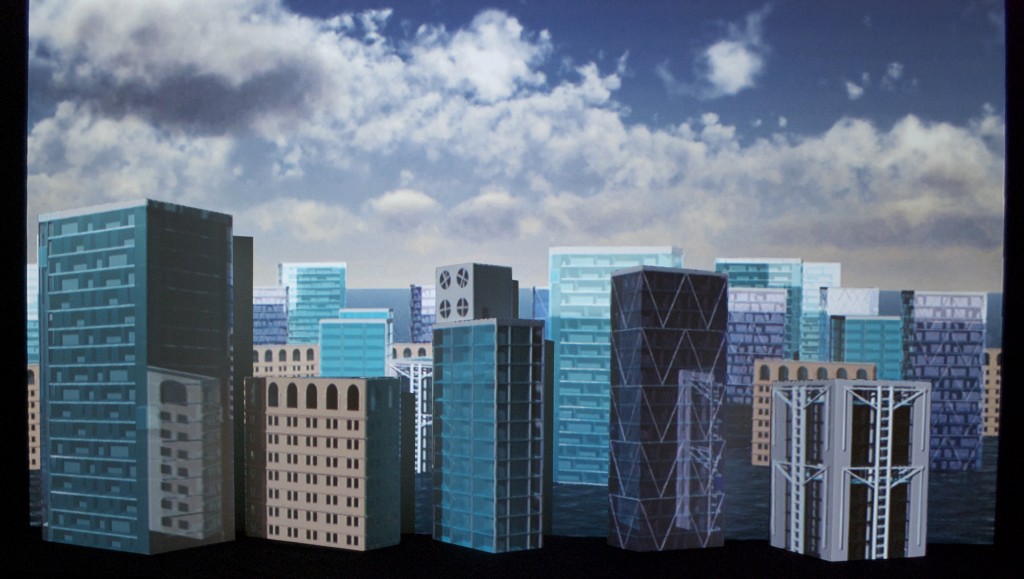
The Maya version of the cityscape being projected
During the course of Otronicon, there were periods of downtime where I returned to the LightWave version of the city. I added texture maps to the window boxes of the buildings, gave the rest of the buildings more complicated procedural textures, and added basic lighting setups. Once I was done, I rendered the “sweetened” version of the city as a still in day and night versions, to be used on our idle screen in between shows.
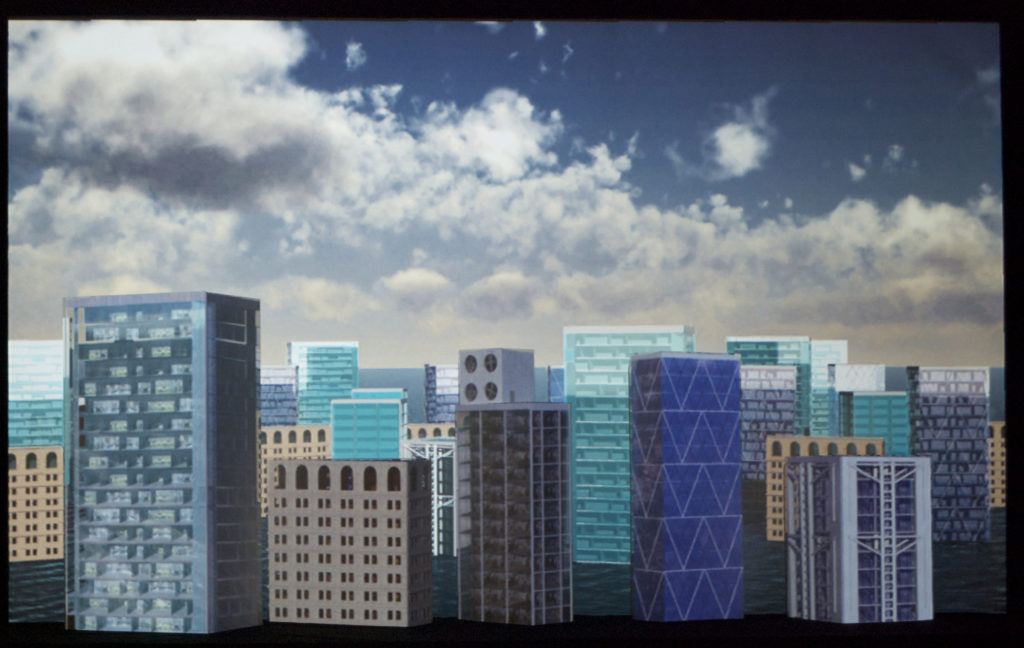
The LightWave daytime version of the city being projected
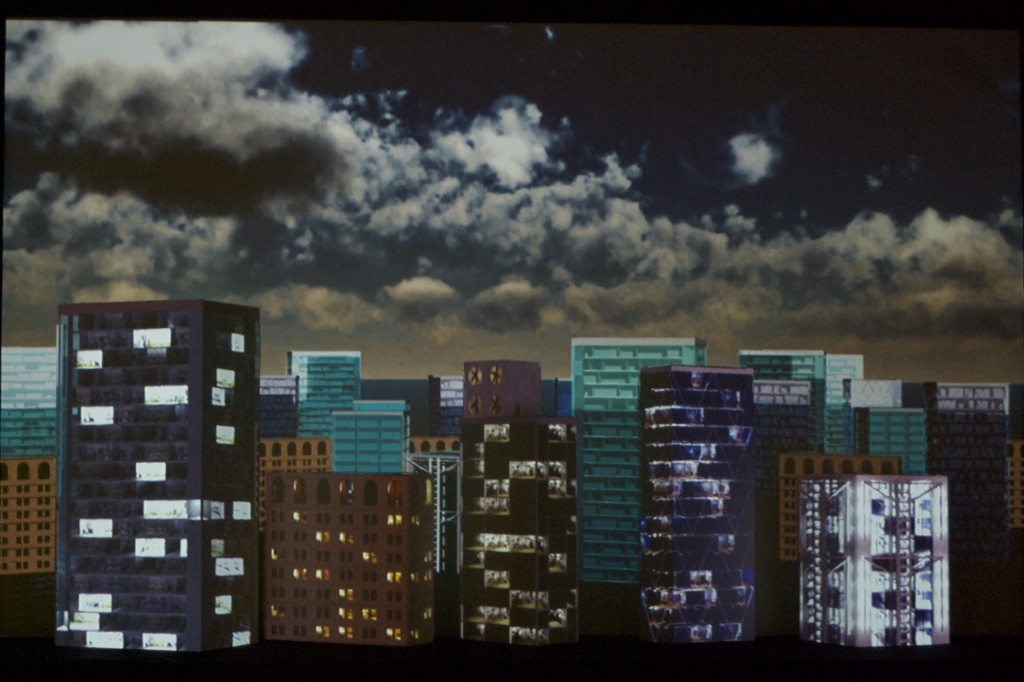
The LightWave night version of the city being projected
A version of this post appeared on the official Ninjaneer Studios blog.
